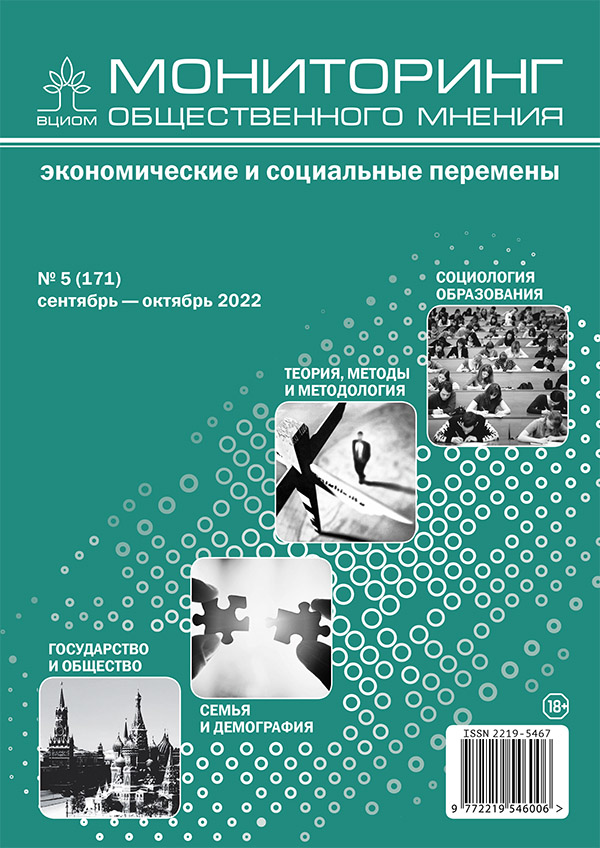Socio-Psychological Analysis of the Image of Charity and Volunteerism in the Digital Environment
DOI:
https://doi.org/10.14515/monitoring.2022.5.2225Keywords:
charity, volunteerism, image, digital environment, social networks, psychology of perceptionAbstract
One of the ways to study the prevalence of charity and volunteerism is to analyze their coverage in social media — mass media, Internet sites, and social networks. Today, most funds have their accounts on the social media, which allows them to attract younger and more active users to the target audience. However, the realities of how messages about charity are perceived in social media should be considered qualitatively to understand what people think when such messages appear in their news feeds and what kind of image of charity as a social phenomenon they are forming. The purpose of the study is to conduct a socio-psychological analysis of charitable organizations’ practices in social networks and the perception of the image of charity and volunteerism formed by them in the minds of various categories of the population of Russian society. As a methodological basis, we used the psychosemiotic approach, according to which the perception of the image of charity in digital social media is carried out by influencing the target audience’s emotional, value-motivational and cognitive spheres. The study included content analysis and statistical analysis of data from sociological studies devoted to identifying the features of coverage in the media and social networks of charitable activities and the consumption of this content by the target audience. First, we analyzed the experience of online communication and the presentation of information by charitable organizations in social media, based on which users form an image of charity. For this purpose, we conducted an online focus group with representatives of five non-profit organizations (NGOs) based in Moscow, St. Petersburg, and Penza. Then we studied the peculiarities of social media users’ perception of charity-related content (the image of charity) and related information behavior. For this purpose, we conducted a series of three online focus groups with the students and middle-aged people. We concluded that charitable organizations, when posting information on social networks, avoid manipulation, and “toxic content” (causing adverse emotional reactions), demonstrate the values of social responsibility and an active lifestyle, post educational content and rely on local identity. For users of social networks, the most attractive is news content about charity, which is associated with humanistic values and social activity, charitable organizations and events they hold. The results indicate the need for specialists in charitable foundations that develop and publish information about charity events, volunteering, etc., to use “constructive journalism” methods based on positive psychology that forms humanistic values and social norms.
Acknowledgements. The article was prepared based on the results of participation in the “Research Internships” professional development event of the Center for the Development of Philanthropy of the Vladimir Potanin Charitable Foundation. The author expresses his gratitude to Roman Sklotsky, Director of the Center for the Development of Philanthropy of the Vladimir Potanin Charitable Foundation, for his help in organizing the study.
Downloads
Published
How to Cite
Issue
Section
License
Copyright (c) 2022 Monitoring of Public Opinion: Economic and Social Changes Journal (Public Opinion Monitoring) ISSN 2219-5467

This work is licensed under a Creative Commons Attribution-NonCommercial-ShareAlike 4.0 International License.






